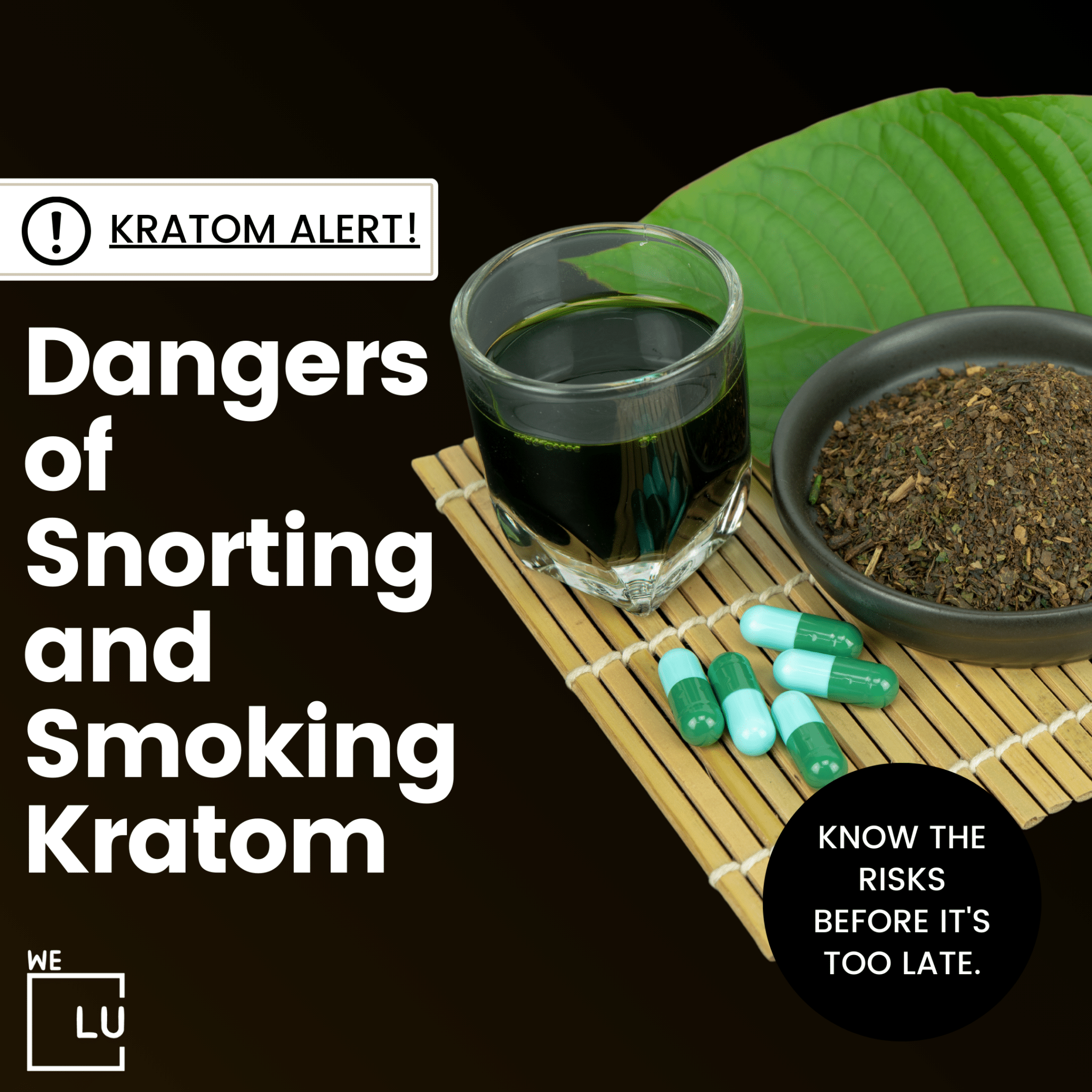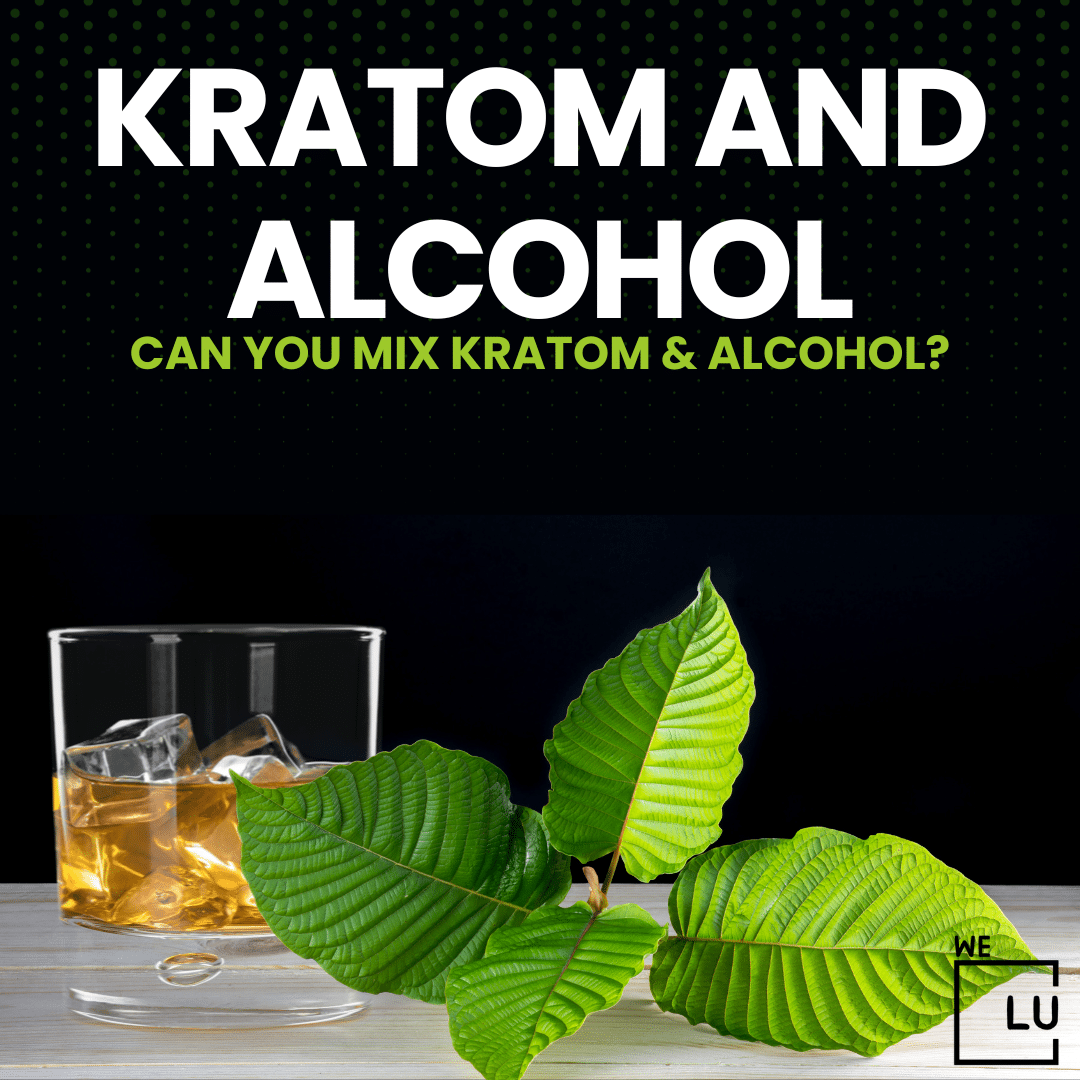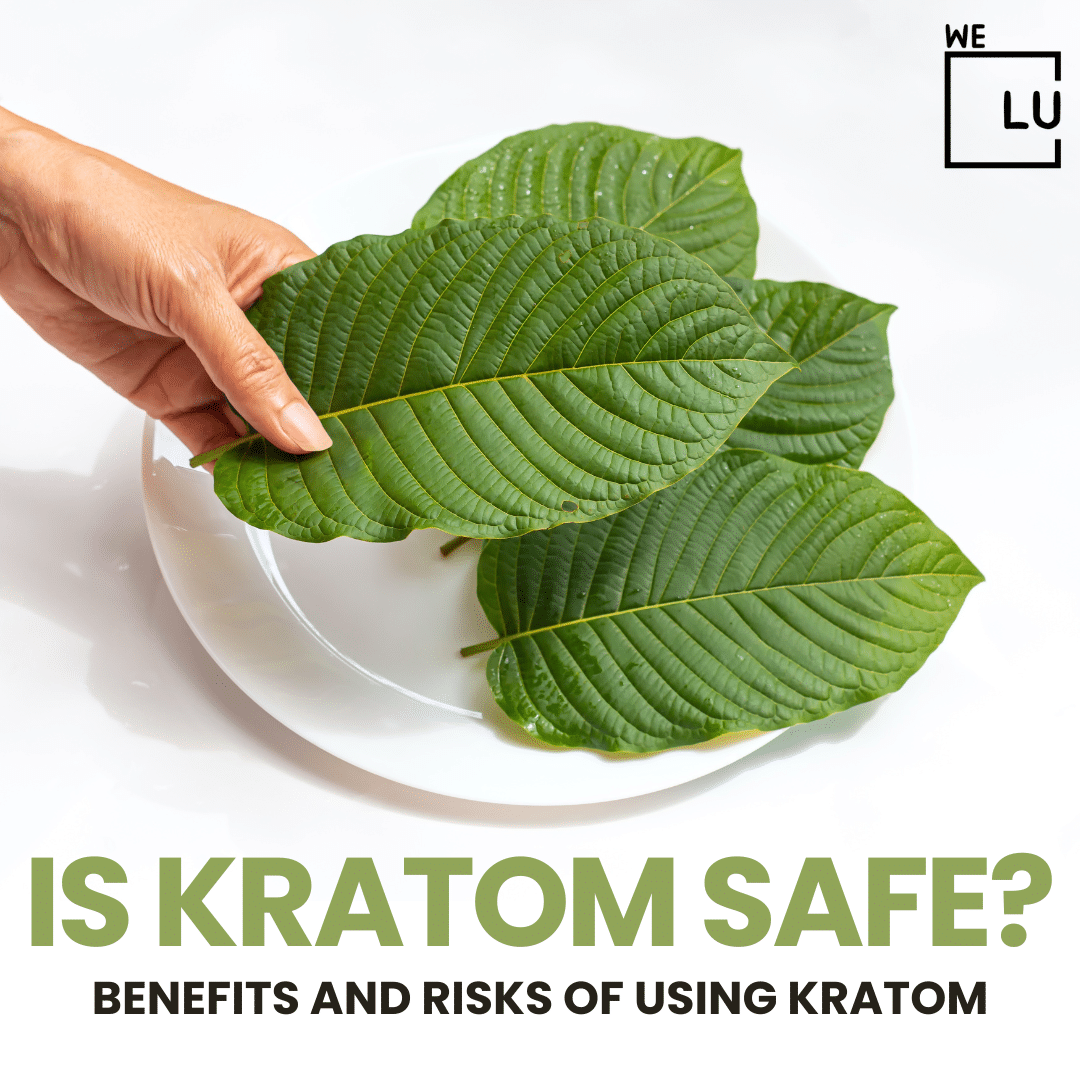Kava and Kratom have unfortunately become common subjects of misuse. They’ve garnered popularity as natural remedies for their calming and mood-altering properties. However, the abuse of these substances has raised concerns. Individuals may sometimes exceed recommended doses, assuming more is better, which can lead to potentially disastrous results.
Kava and Kratom may seem enticing, but using them can be risky. Think of the potential for dependence, addiction, and even liver damage, seizures, and worse. Avoid making a habit out of taking these supplements and learn more about what Kava and Kratom are.
The effects of Kava and Kratom are mainly similar. They both produce mood-altering and soothing effects in those who consume them. Parts of Kava and Kratom are refined and sold as supplements in a powdered, pilled, or liquid-extracted form. Although Kava and Kratom appear identical, they are entirely different plants.
Need help with kratom and kava dependence? Reach out to We Level Up CA Treatment Center for compassionate support. Your journey to a healthier, substance-free life can begin with a simple call. Contact us today to start your path to recovery.
What Is Kratom?
In Western Countries like the US, Kratom is sold as an herbal supplement. This supplement takes the form of powders or liquid extracts. But, in Southeast Asia — where Kratom is originally from — the leaves are brewed into tea or chewed on like tobacco.
People say Kratom might ease withdrawal, primarily from opioids. However, the US FDA has not given its official nod for Kratom to be used this way. Still, you can find Kratom being sold legally in some US states, hanging out on the shelves labeled as an herbal supplement. It can also sometimes be found in specialty smoke shops.
The current lack of research has placed Kratom in the category of being unpredictable and unreliable. Picture it as a scientific puzzle with some missing pieces.
Some states in the US have taken a cautious stance. They have set up specific rules and restrictions on the buying and selling of Kratom, like a regulatory safety net.
Meanwhile, other states have taken a more decisive step, choosing to ban Kratom outright, perhaps opting for the “better safe than sorry” approach in the absence of complete scientific certainty. It’s like a cautious response to the unknowns, with regulators taking steps until we have a clearer picture of what Kratom does and its potential risks.
What Is Kava?
Kava, derived from the kava plant’s roots, originates from the pepper family and is indigenous to regions in the Pacific Islands, such as Fiji and Indonesia. People use the kava root to craft various teas and juices. Restaurants and bars blend it with water or coconut milk to produce beverages enjoyed socially or recreationally.
Kava is a significant component of ceremonial rituals in its native regions. It is also utilized as a medicinal herb in those communities.
In the United States, Kava is commonly consumed as a tea, a supplement, or an added ingredient in specific baked goods. Those grappling with anxiety or insomnia often turn to kava for relief because of its soothing effects.
Difference Between Kava And Kratom
Is Kava And Kratom The Same Thing?
Ultimately, Kava and Kratom are two entirely separate plants and drugs. Do not let their similarities confuse you.
- Plant species and family: Kratom, part of the coffee family, is a tree with the scientific name Mitragyna speciosa. On the other hand, Kava, belonging to the pepper family, is a shrub known as Piper methysticum.
- Focal part of the plant: Each supplement’s main ingredient focuses on the different parts of these plants. For Kratom, it’s all about the leaves—they go through a process to create the supplement. On the flip side, Kava takes things underground, literally. The key player is the shrub’s roots used to make the supplement.
- General Usage:
| Herbal Supplement | Use |
| Kratom | Stimulant, pain management |
| Stimulant, pain managementnt | Alleviating insomnia, anxiety, and stress |
Kava And Kratom Effects
Kratom Effects
Kratom is thought to have opioid-like effects due to the way Kratom’s chemical compounds interact with the human body. This interaction usually produces an overall soothing effect. As mentioned above, research is still being done to confirm and explore the effects of Kratom.
- Pain Relief.
- Mood Enhancement.
- Stimulation.
- Relaxation and Sedation.
- Improved Focus and Concentration.
- Euphoria.
- Appetite Suppression.
Kava Effects
As a depressant, Kava is distinct. Instead of heightening alertness or inducing hallucinations, Kava promotes relaxation. It’s akin to hitting the brakes on the hyperactivity of the nervous system, leading to a state of calmness without the stimulating effects associated with other drug categories.
- Relaxation.
- Mood Enhancement.
- Anxiety Reduction.
- Improved Sleep.
- Social Relaxation.
- Mild Sedation.
- Enhanced Sociability.
- Mental Clarity.

Skip To:
Learn More:
- Is Kratom Legal? Kratom Legality And Where It Is Legal.
- Is Kratom Safe? Benefits And Risks Of Using Kratom.
- Kratom Side Effects Long-Term And Short-Term Side Effects.
- How Long Does Kratom Last In Your System? Kratom Half Life.
- Is Kratom An Opioid? Can You Use Kratom For Opioid Withdrawal?
- Risks And Effects Of Kratom Addiction. Is Kratom Addictive?
- Kratom Withdrawal Symptoms, Timeline, Dangers, And Detox
- Kratom Overdose Symptoms, Factors, And Treatment.
- Kratom And Alcohol. Can You Mix Kratom And Alcohol?

Get Your Life Back
Find Hope & Recovery. Get Safe Comfortable Detox, Addiction Rehab & Dual Diagnosis High-Quality Care.
Hotline (855) 695-1160
Legality Of Kava Vs Kratom
Kratom has been at the center of much controversy.
While it is legal at the federal level, The FDA has deemed it a drug of concern and has given out warnings for its use. Each state will decide whether Kratom is legal or not. Several states have entirely banned Kratom, and there are a few more that have restrictions placed upon it.
To learn more about the legality of Kratom, click below:
In stark contrast to Kratom, Kava is entirely legal in all states. Kava is even sold in both specialty and mainstream stores.
Get Help. Get Better. Get Your Life Back.
Searching for an Accredited Drug and Alcohol Rehab Centers in Near You?
Even if you have failed previously and relapsed, or are in the middle of a difficult crisis, we stand ready to support you. Our trusted behavioral health specialists will not give up on you. When you feel ready or just want someone to speak to about therapy alternatives to change your life call us. Even if we cannot assist you, we will lead you to wherever you can get support. There is no obligation. Call our hotline today.
FREE Addiction Hotline – Call 24/7Dangers Of Kratom vs Kava
No drug, seemingly benign or plant-derived, is exempt from potential risks. Kratom and Kava are completely natural herbal supplements — yet they still come with their own set of cautions. It’s tempting to assume they are automatically safe since they hail from nature, but the complexities lie beneath the surface.
Kratom, with its opiate-like qualities, and Kava, boasting tranquility-inducing kavalactones, both present a paradox—natural yet capable of weaving unforeseen dangers into the equation. For instance, Kratom is known to have a potential for dependency — and, with continued use, addiction. Even the greenest of remedies demand a cautious dance with awareness and understanding.
Dangers of Kratom
Kratom stands as a unique yet potentially risky player. This botanical substance is known for its opiate-like effects, but the allure of relief comes hand-in-hand with notable risks. From the potential for dependency to concerns about liver issues, Kratom comes with a set of complexities that one should be aware of.
- Risk of Dependency.
- General And Liver Health Concerns.
- Lack of Regulation.
- Interaction with Medications.
- Cognitive Effects.
- Gastrointestinal Issues.
- Respiratory Issues
- Negative Effects On Mental Health.
- Contaminated Batches.
- Legal Issues Within and Outside the US.
Dangers of Kava
Kava has found cultural use as a calming beverage. Still, simplicity doesn’t necessarily mean safety. Beneath its laid-back reputation are potential risks like liver damage.
- Potential for Hepatotoxicity (In the liver).
- Quality and Source Concerns.
- Interaction with Medications.
- Allergic Reactions.
- Sedation and Impaired Reflexes.
- Pregnancy Concerns.
- Central Nervous System Depression.
- Legal Restrictions in Different Countries.

First-class Facilities & Amenities
World-class High-Quality Addiction & Mental Health Rehabilitation Treatment
Rehab Centers TourRenowned California Addiction Center. Serene Private Facilities. Inpatient rehab programs vary.
Addiction Helpline (855) 695-1160Proven recovery success experience, backed by a Team w/ History of:
15+
Years of Unified Experience
100s
5-Star Reviews Across Our Centers
10K
Recovery Success Stories Across Our Network
- Low Patient to Therapist Ratio
- Onsite Medical Detox Center
- Comprehensive Dual-Diagnosis Treatment
- Complimentary Family & Alumni Programs
- Coaching, Recovery & Personal Development Events
Can You Get Addicted To Kava Or Kratom?

Kratom can lead to addiction due to its similarity to opioid drugs and its impact on specific brain areas. The euphoric effects of the supplement are a significant factor in fostering addiction. Individuals may become reliant on the positive feelings it produces.
For those who have a prior history of substance abuse, the relationship with Kratom becomes more risky. There is a higher likelihood of these people developing a Kratom addiction. On the other hand, regular and high-dose use further elevates the likelihood of addiction.
Current research does not suggest the possibility of kava addiction. Unlike some other substances, Kava seems to lack the grip that leads to dependency. However, this does not grant a free pass to careless use.
Foremost among these concerns is the looming threat of liver damage. While Kava has been a traditional beverage in many cultures for centuries, contemporary usage has raised red flags, particularly regarding its impact on the liver. As Kava finds its way into modern lifestyles, users should tread carefully; even the most serene botanical remedies can harbor unexpected challenges.
World-class, Accredited, 5-Star Reviewed, Effective Addiction & Mental Health Programs. Complete Behavioral Health Inpatient Rehab, Detox plus Co-occuring Disorders Therapy.
CALL (855) 695-1160End the Addiction Pain. End the Emotional Rollercoaster. Get Your Life Back. Start Drug, Alcohol & Dual Diagnosis Mental Health Treatment Now. Get Free No-obligation Guidance by Substance Abuse Specialists Who Understand Addiction & Mental Health Recovery & Know How to Help.
Can You Mix Kratom And Kava?
It is technically possible to combine Kratom and Kava. But, the overall unpredictability of the effects outweighs any potential benefit. Not to mention, Kratom is already a risky substance to consume.
Both are naturally derived: Kratom, from a tropical tree’s leaves, and Kava, from the Kava plant’s roots. They also have similar calming effects, even if their mechanisms are different. Their similarities make it seem like a good idea to mix the two.
But, both kratom and kava have depressant effects. The enhanced and intensified sedative impact could lead to extreme drowsiness and impaired coordination. It’s akin to a tag team of tranquilizers, potentially leaving individuals in a state of profound lethargy and poor physical functioning.
Adding another layer of concern, both substances are also known to cause issues with the liver, such as liver toxicity. The liver, tasked with processing these substances, may face an intensified workload, potentially resulting in adverse outcomes.
The lack of research into the mix of both these drugs, combined with the risky unpredictability of Kratom, really makes this combination a lousy idea. The potential for unforeseen interactions and heightened side effects is too high to make this combination worth the trouble.
Remember that factors like overall health, tolerance, and other characteristics can affect how one reacts to substances.
Experience Transformative Recovery at the We Level Up California Treatment Center.
See our authentic success stories. Get inspired. Get the help you deserve.



Start a New Life
Begin with a free call to an addiction & behavioral health treatment advisor. Learn more about our dual-diagnosis programs. The We Level Up treatment center network delivers recovery programs that vary by each treatment facility. Call to learn more.
- Personalized Care
- Caring Accountable Staff
- World-class Amenities
- Licensed & Accredited
- Renowned w/ 100s 5-Star Reviews
We’ll Call You
Watch Why “Denial is a huge part of the disease of addiction?”
Search We Level Up CA Kratom And Kava Drug & Alcohol Rehab / Detox & Mental Health Topics & Resources
Sources
- White CM. The Pharmacology, Pharmacokinetics, Efficacy, and Adverse Events Associated With Kava. J Clin Pharmacol. 2018 Nov;58(11):1396-1405. doi: 10.1002/jcph.1263. Epub 2018 May 23. PMID: 29791008. https://pubmed.ncbi.nlm.nih.gov/29791008/
- Teschke R, Sarris J, Glass X, Schulze J. Kava, the anxiolytic herb: back to basics to prevent liver injury? Br J Clin Pharmacol. 2011 Mar;71(3):445-8. doi: 10.1111/j.1365-2125.2010.03775.x. PMID: 21284704; PMCID: PMC3045554. https://www.ncbi.nlm.nih.gov/pmc/articles/PMC3045554/
- Smith K, Leiras C. The effectiveness and safety of Kava Kava for treating anxiety symptoms: A systematic review and analysis of randomized clinical trials. Complement Ther Clin Pract. 2018 Nov;33:107-117. doi: 10.1016/j.ctcp.2018.09.003. Epub 2018 Sep 15. PMID: 30396607. https://pubmed.ncbi.nlm.nih.gov/30396607/
- Pont-Fernandez S, Kheyfets M, Rogers JM, Smith KE, Epstein DH. Kava (Piper methysticum) in the United States: the quiet rise of a substance with often subtle effects. Am J Drug Alcohol Abuse. 2023 Jan 2;49(1):85-96. doi: 10.1080/00952990.2022.2140292. Epub 2022 Nov 21. PMID: 36410029. https://pubmed.ncbi.nlm.nih.gov/36410029/
- Sarris J, LaPorte E, Schweitzer I. Kava: a comprehensive review of efficacy, safety, and psychopharmacology. Aust N Z J Psychiatry. 2011 Jan;45(1):27-35. doi: 10.3109/00048674.2010.522554. Epub 2010 Nov 15. PMID: 21073405. https://pubmed.ncbi.nlm.nih.gov/21073405/
- Bian T, Corral P, Wang Y, Botello J, Kingston R, Daniels T, Salloum RG, Johnston E, Huo Z, Lu J, Liu AC, Xing C. Kava as a Clinical Nutrient: Promises and Challenges. Nutrients. 2020 Oct 5;12(10):3044. doi: 10.3390/nu12103044. PMID: 33027883; PMCID: PMC7600512. https://www.ncbi.nlm.nih.gov/pmc/articles/PMC7600512/
- Soares RB, Dinis-Oliveira RJ, Oliveira NG. An Updated Review on the Psychoactive, Toxic and Anticancer Properties of Kava. J Clin Med. 2022 Jul 12;11(14):4039. doi: 10.3390/jcm11144039. PMID: 35887801; PMCID: PMC9315573. https://www.ncbi.nlm.nih.gov/pmc/articles/PMC9315573/
- LiverTox: Clinical and Research Information on Drug-Induced Liver Injury [Internet]. Bethesda (MD): National Institute of Diabetes and Digestive and Kidney Diseases; 2012-. Kava Kava. [Updated 2018 Apr 10]. Available from: https://www.ncbi.nlm.nih.gov/books/NBK548637/ Read more: kava and kratom, kava vs kratom, kratom vs kava, kava kratom,
- NIDA. “Kratom.” National Institute on Drug Abuse, 25 Mar. 2022, https://nida.nih.gov/research-topics/kratom Read more: read more: smoking kratom, can you snort kratom, snorting kratom, kratom snort, kratom snorting, snort kratom, kratom smoking, do people snort kratom, smoking kratom powder,
- DEA – Kratom Drug Fact Sheet – https://www.dea.gov/sites/default/files/2020-06/Kratom-2020_0.pdf
- FDA – Kratom – https://www.fda.gov/news-events/public-health-focus/fda-and-kratom
- Jentsch MJ, Pippin MM. Kratom. [Updated 2023 Aug 28]. In: StatPearls [Internet]. Treasure Island (FL): StatPearls Publishing; 2023 Jan-. Available from: https://www.ncbi.nlm.nih.gov/books/NBK585120/
- Palasamudram Shekar S, Rojas EE, D’Angelo CC, Gillenwater SR, Martinez Galvis NP. Legally Lethal Kratom: A Herbal Supplement with Overdose Potential. J Psychoactive Drugs. 2019 Jan-Mar;51(1):28-30. doi: 10.1080/02791072.2018.1562591. Epub 2019 Jan 8. PMID: 30620247. https://pubmed.ncbi.nlm.nih.gov/30620247/
- Henningfield JE, Chawarski MC, Garcia-Romeu A, Grundmann O, Harun N, Hassan Z, McCurdy CR, McMahon LR, Sharma A, Shoaib M, Singh D, Smith KE, Swogger MT, Vicknasingam B, Walsh Z, Wang DW, Huestis MA. Kratom withdrawal: Discussions and conclusions of a scientific expert forum. Drug Alcohol Depend Rep. 2023 Mar 15;7:100142. doi: 10.1016/j.dadr.2023.100142. PMID: 37397437; PMCID: PMC10311168. https://www.ncbi.nlm.nih.gov/pmc/articles/PMC10311168/
- Striley CW, Hoeflich CC, Viegas AT, Berkowitz LA, Matthews EG, Akin LP, Iheanyi-Okeahialam C, Mansoor U, McCurdy CR. Health Effects Associated With Kratom (Mitragyna speciosa) and Polysubstance Use: A Narrative Review. Subst Abuse. 2022 May 20;16:11782218221095873. doi: 10.1177/11782218221095873. PMID: 35645563; PMCID: PMC9130800. https://www.ncbi.nlm.nih.gov/pmc/articles/PMC9130800/
- Eastlack SC, Cornett EM, Kaye AD. Kratom-Pharmacology, Clinical Implications, and Outlook: A Comprehensive Review. Pain Ther. 2020 Jun;9(1):55-69. doi: 10.1007/s40122-020-00151-x. Epub 2020 Jan 28. PMID: 31994019; PMCID: PMC7203303. https://pubmed.ncbi.nlm.nih.gov/31994019/
- Singh D, Narayanan S, Vicknasingam B, Corazza O, Santacroce R, Roman-Urrestarazu A. Changing trends in the use of kratom (Mitragyna speciosa) in Southeast Asia. Hum Psychopharmacol. 2017 May;32(3). doi: 10.1002/hup.2582. Epub 2017 May 24. PMID: 28544011. https://pubmed.ncbi.nlm.nih.gov/28544011/
- Grundmann O, Veltri CA, Morcos D, Knightes D 3rd, Smith KE, Singh D, Corazza O, Cinosi E, Martinotti G, Walsh Z, Swogger MT. Exploring the self-reported motivations of kratom (Mitragyna speciosa Korth.) use: a cross-sectional investigation. Am J Drug Alcohol Abuse. 2022 Jul 4;48(4):433-444. doi: 10.1080/00952990.2022.2041026. Epub 2022 Apr 7. PMID: 35389321.https://pubmed.ncbi.nlm.nih.gov/35389321/
- Papadi G, Bakhiya N, Ildico Hirsch-Ernst K. Assessment of the possible health risks associated with the consumption of botanical preparations of Mitragyna speciosa (kratom). EFSA J. 2022 May 25;20(Suppl 1):e200415. doi: 10.2903/j.efsa.2022.e200415. PMID: 35634550; PMCID: PMC9131591. https://pubmed.ncbi.nlm.nih.gov/35634550/
- Singh D, Müller CP, Vicknasingam BK, Mansor SM. Social Functioning of Kratom (Mitragyna speciosa) Users in Malaysia. J Psychoactive Drugs. 2015 Apr-Jun;47(2):125-31. doi: 10.1080/02791072.2015.1012610. PMID: 25950592. https://pubmed.ncbi.nlm.nih.gov/25950592/




